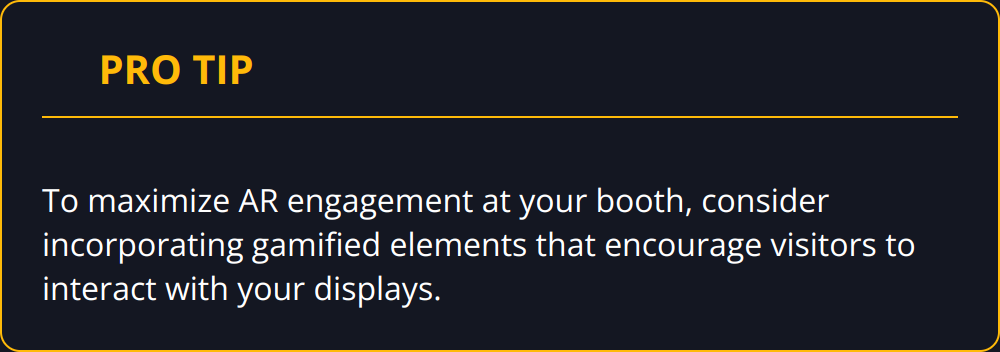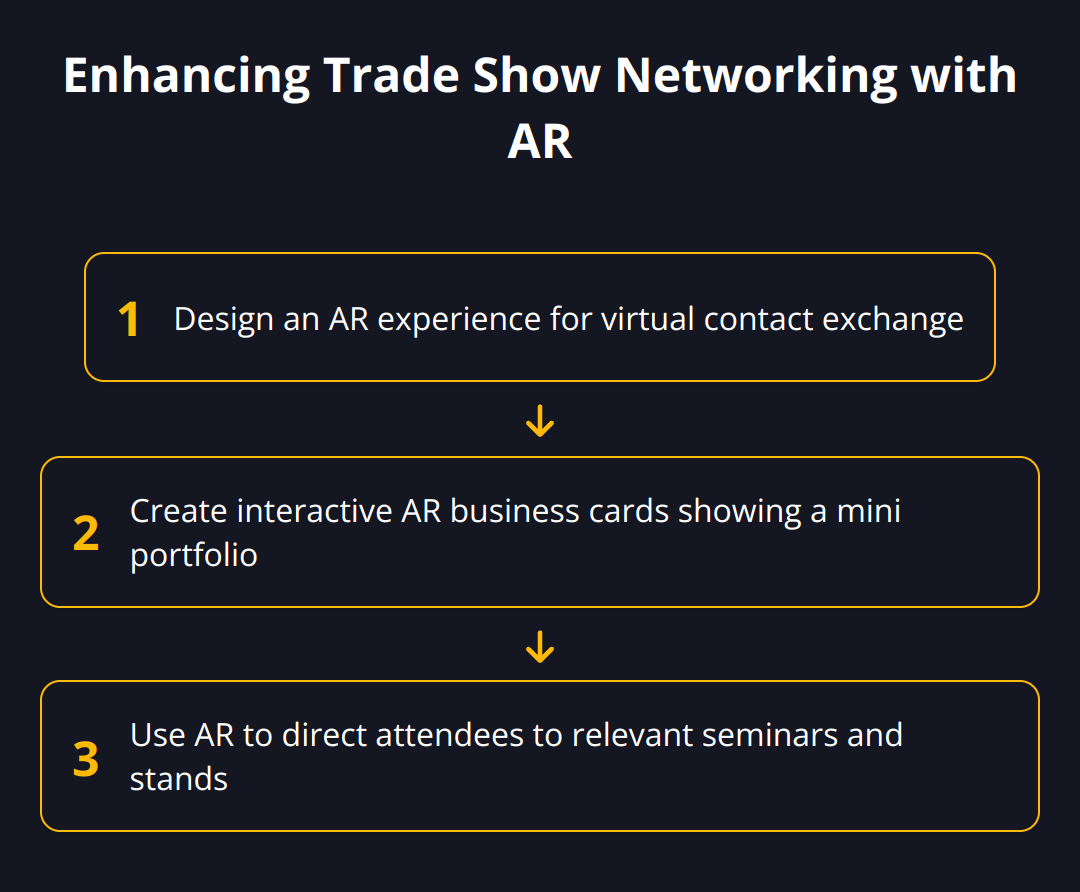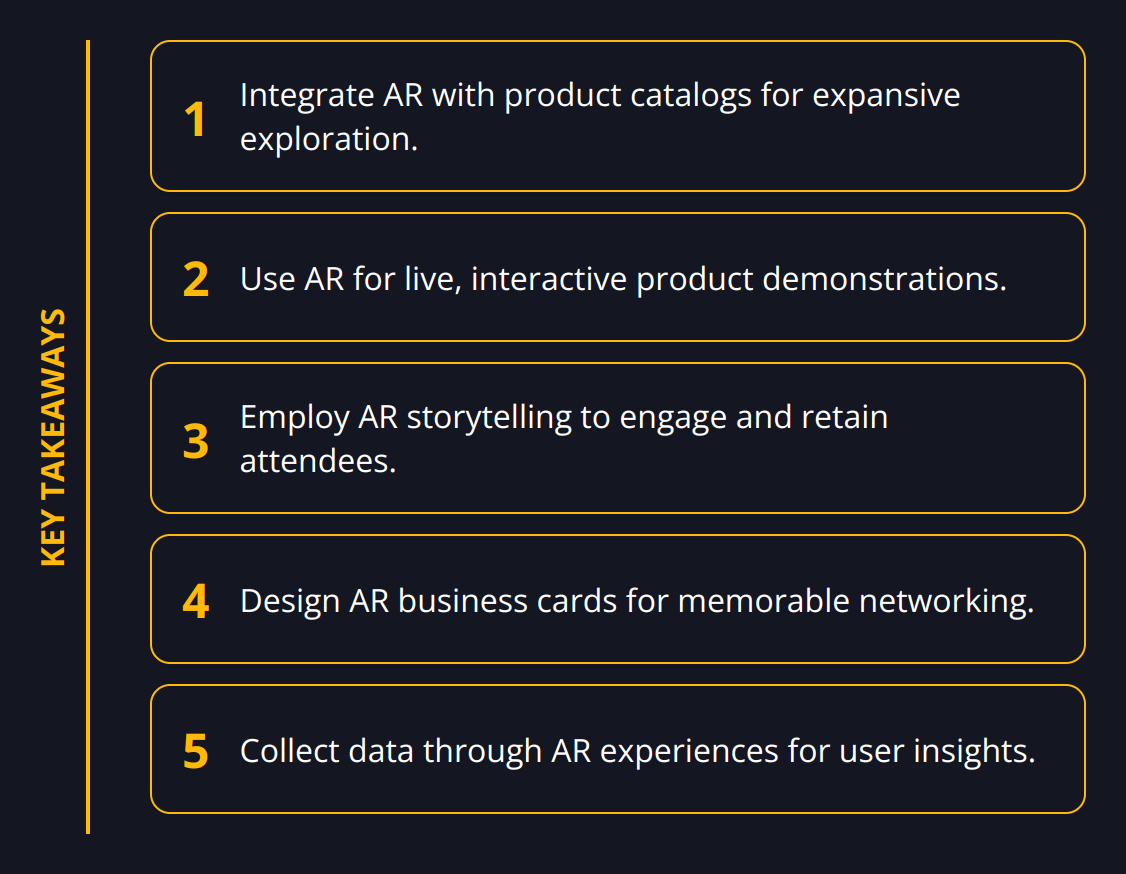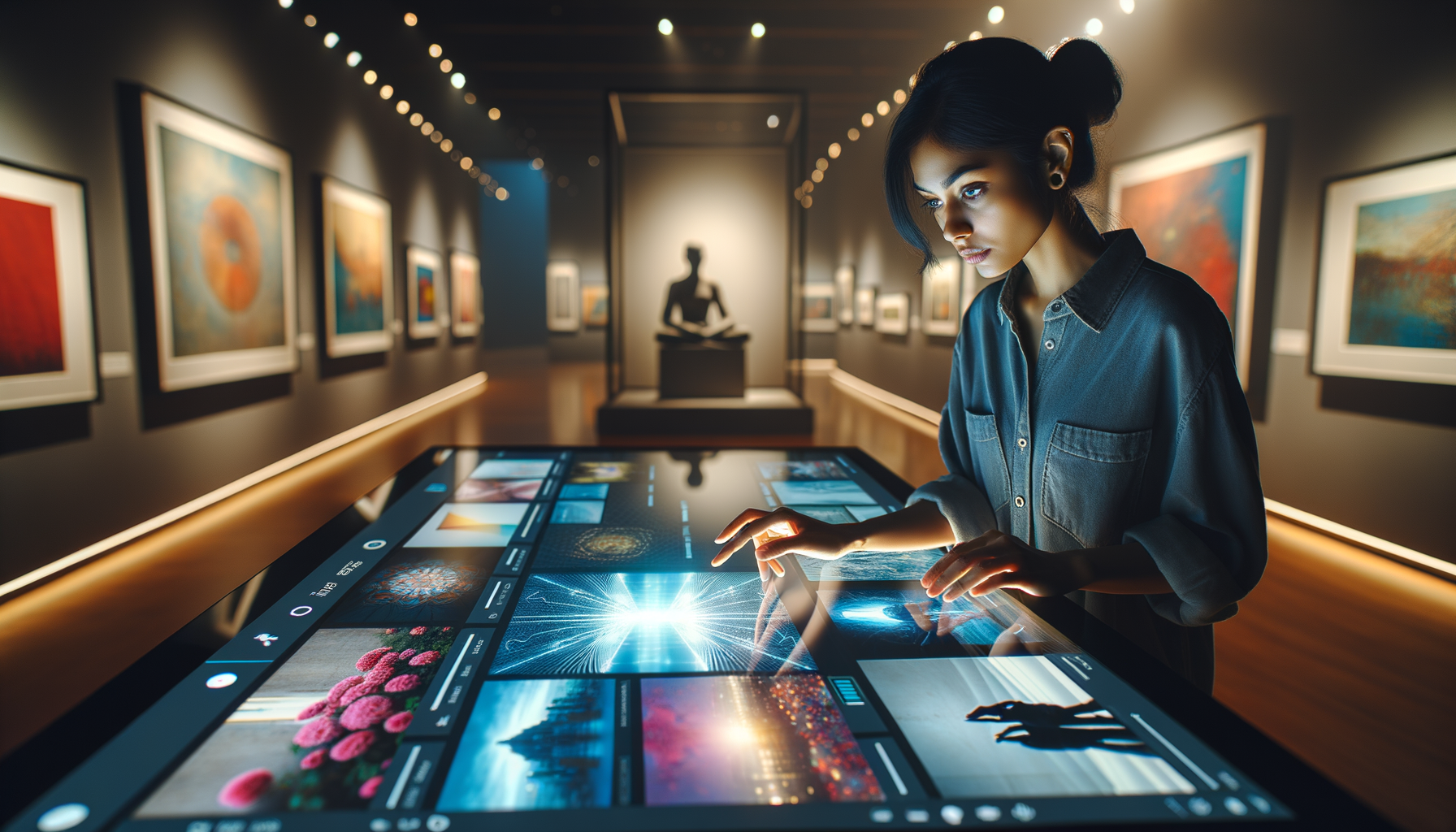Trade shows are evolving rapidly, thanks to cutting-edge technologies like Augmented Reality (AR). We at newroom connect have seen firsthand how AR is reshaping the way exhibitors and attendees interact, offering new and exciting ways to experience products and services. From dynamic product demonstrations to interactive booths, AR is setting a new standard for engagement at trade shows. This post will delve into the transformative power of AR, its benefits for participants, and share real-world success stories from industry-leading events.
Augmented Reality Boosts Trade Show Impact
As technology marches forward, Augmented Reality (AR) has emerged as a game-changer in the realm of trade shows. It’s not just a futuristic concept; it’s a practical tool that’s already transforming the ways brands showcase their offerings. Imagine being able to place a full-scale model of machinery right on the showroom floor, or personalizing a product demonstration to each visitor’s interests—all made possible with AR.
AR breathes digital life into physical spaces. Unlike Virtual Reality (VR), which envelops the user in a completely virtual environment, AR merges digital content with real-world settings. Visitors can use their smartphones or AR glasses to see 3D renderings of products overlaid onto the environment around them. Now, let’s examine how AR’s integration into the events industry is a perfect solution for exhibitor and attendee enhancement.
Firstly, the events and exhibitions landscape has dramatically evolved with AR technology. A statistic from 2021 indicates robust growth in the integration of AR in trade shows. It’s not just about being tech-savvy; it’s about creating unparalleled user engagement. These immersive experiences aren’t a novelty—they are a response to the increasing demand for interactive and personalized content.
The benefits for participants are tangible and multifaceted. For exhibitors, AR offers a way to exhibit products that are too large or complex to bring to the show floor. Instead of shipping heavy equipment, they can present interactive 3D models that attendees can explore at scale. Furthermore, AR lends itself to storytelling, allowing brands to deliver rich narratives about their products and services that resonate more deeply with prospects.
For attendees, AR provides a level of interaction previously unattainable. They are no longer passive spectators; they are active participants in the brand story. This interaction boosts retention and enhances recall, making the trade show experience memorable. It also allows for customization of the viewing experience, catering to individual interests and needs, hence fostering a deeper connection with the brand.

Here’s how trade show participants can leverage AR:
-
Integrate AR with your product catalog to let visitors explore your entire range in a compact space.
-
Use AR for live demonstrations, enabling attendees to experience products in action virtually.
-
Employ AR as a storytelling device to unfold your brand narrative in an engaging manner.
-
Utilize AR for training and education within the booth, offering an interactive learning experience for complex products.

The efficacy of AR at trade shows can’t be understated. With 94% of businesses emphasizing entertainment as the key reason consumers engage with AR, it’s clear that this technology is not only a utility but also an experience enhancer. AR offers a remarkable opportunity for brands to stand out in the competitive landscape of trade shows by providing experiences that are genuinely engaging and memorable.
The shift towards AR is a powerful testament to its potential in revolutionizing how we interact with products and brands. It’s imperative for companies to consider this innovative approach to trade show exhibitions, as it represents not just the future, but the present of engaging marketing strategies. With thoughtful implementation, AR can lead to increased foot traffic, higher engagement rates, and ultimately, significant lead generation.
Transforming Trade Show Dynamics with AR
Augmented Reality is rapidly altering the landscape of trade show experiences. Typically, the goal of a trade show for exhibitors is to showcase products and services to potential customers, partners, and industry professionals. However, static displays and traditional presentations are quickly giving way to the dynamic and interactive capabilities AR offers. For attendees, AR makes every booth visit a personalized and engaging journey. Now more than ever, exhibitors need to embrace AR to keep pace with emerging trends and audience expectations.

Dynamic Demonstrations Made Possible
Imagine a booth where instead of telling visitors about your product, you instantly show them how it operates in different environments and scenarios. AR allows for such dynamic product demonstrations. You can project a life-size model of your product, invite interaction, and demonstrate functionality right on the spot. This not only draws the crowd but also provides them with hands-on experience. In industries like construction or machinery where size and logistics often limit physical displays, this is transformative.
Here are some real-world applications:
-
A construction equipment company uses AR to showcase how their machinery functions on a virtual job site.
-
A car manufacturer provides an AR experience that lets attendees look under the hood without needing the actual car present.
Networking Beyond Business Cards
Networking is a critical component of trade shows. AR offers innovative ways to enhance these opportunities. For instance, smart badges incorporating AR can be scanned to reveal in-depth professional profiles, work portfolios, and even availability for meetings. By using AR, you’re not just exchanging contact information; you’re sharing a piece of your professional story compellingly and memorably.

Actionable tips for enhanced networking include:
-
Designing an AR experience that facilitates virtual exchange of contact information
-
Creating interactive AR business cards that display a mini portfolio when viewed through an AR app
-
Using AR to guide attendees to relevant seminars and stands for their interests, encouraging more efficient networking
Booths as Immersive Storytelling Platforms
An exhibitor’s booth is their storytelling stage. Through AR, storytelling becomes an immersive adventure where every attendee can become part of the narrative. This creative use of space and digital storytelling profoundly impacts attendee retention. It also helps differentiate brands in a space where standing out is paramount to success.
To engage attendees on a deeper level:
-
Offer an AR treasure hunt that takes attendees through the nuanced story of your brand, ending in a memorable takeaway
-
Use AR to overlay the attendee’s surroundings with scenarios that show how your product could enhance their work or life
These are not mere suggestions; they are practical strategies that have shown to increase booth traffic and engagement. As outlined in our insights on effective virtual conferences, interactive and immersive experiences resonate with audiences far more than traditional approaches.
There’s ample evidence to support the shift toward augmented experiences at trade shows. A study by Accenture shows that immersive experiences can boost customer engagement, with 47% of consumers reporting increased engagement with brands that offer such experiences. Another report from Statista highlights that AR engagement can lead to a 30% higher conversion rate when compared to non-AR experiences.
In conclusion, AR is not just another passing trend. It’s a powerful, evolving technology that sets the stage for meaningful interactions, stronger connections, and storytelling that resonates. As trade shows continue to adapt, integrating AR into your strategy can vastly enhance the attendee experience, leading to better results for all involved.
AR Success in Different Industries
Trade shows across various industries have seen remarkable success with the integration of Augmented Reality. The excitement is palpable as companies reap the benefits, showcasing their innovative use of AR to create memorable brand experiences.
Tech Industry Takes AR to Heart
At technology-centric expos like CES, AR has taken center stage, demonstrating the seamless blend of the digital and the physical. CES has been a hot spot for AR, with companies using the tech to highlight features of upcoming products in a way that static displays can’t match. Tech giants use AR to offer virtual hands-on tours of their devices, showing the internal components and software in action without disassembling the actual products. The engagement levels soar when attendees can interact with a gadget via AR – they can see the impacts of tech in real-life contexts, which leads to better understanding and excitement.
Automotive Industry Revs Up AR
The automotive industry has leveraged AR to offer an inside look at vehicles that have yet to hit the showroom floor. Motoring trade shows have been transformed into virtual test tracks where attendees can configure their dream car right from the booth. Potential customers can change colors, wheels, and interior features with a tap on a screen. Some automotive brands have managed to increase sales conversions significantly by providing this immersive AR experience, which enables customers to envision the product as their own. This shift towards digital showrooms has proven to be a sustainable model driving future sales.
Retail and Fashion Redefining Experience
Fashion runways and retail have not been left behind in the AR revolution. Virtual fittings have become a showstopper, providing shoppers with a glimpse into how a piece of clothing would look on them without stepping into a fitting room. Fashion brands at trade shows now engage attendees with AR dressing rooms, allowing instant mix-and-matching of styles and accessories. Customers love the instant gratification of seeing the clothes on them, leading to better engagement and higher chances of making a purchase.

When it comes to applying AR in trade shows, here are some actionable insights:
-
Context is key. Ensure your AR experience ties back to your product’s real-world application.
-
Simplify user interaction. No one wants to struggle with complicated tech at an event.
-
Data collection. Use AR to gather insights on user preferences and behavior.
-
Embrace creativity. AR is a canvas for your imagination – use it to create something unforgettable.
The integration of AR tech in trade shows isn’t just impressive; it’s proving to be a strategic move for brands seeking to deepen customer engagement and tailor experiences. As the trend continues to grow, trade show attendees can expect ever more innovative and interactive displays that may soon redefine the very essence of product demonstrations and branding events.
Wrapping Up
Augmented Reality has unquestionably swept through trade shows, bringing a wave of disruption that has energized the industry. We at newroom connect have witnessed how AR transforms engagements between exhibitors and attendees into dynamic and memorable encounters. Going forward, the incorporation of AR into trade shows is not just an option; it is becoming imperative for any business aiming to captivate and impress a sophisticated, tech-savvy audience.

The Impact of AR on Trade Show Dynamics is evident. Traditional trade show methods are rapidly being replaced by AR’s capability to provide interactive and personalized experiences which are now the expectation, not the exception. This shift isn’t just about staying contemporary—it’s about creating a lasting imprint on the minds of participants, leading to stronger brand-customer relationships.
Why Businesses Should Consider AR for Future Events is clear. It elevates the attendee experience beyond the conventional, stirring both wonder and engagement in ways that significantly boost lead acquisition and conversion rates. The competitive edge AR provides is undeniably substantial.
The Road Ahead for AR in Trade Show Innovations signals a future where immersive, interactive experiences become the backbone of customer engagement strategies. Integrating AR is no longer futuristic thinking—it’s an actionable strategy that’s reshaping the here and now of marketing and outreach efforts.
Embrace the full potential of AR with newroom connect, a versatile platform that’s at the forefront of crafting immersive virtual environments, including trade shows and exhibitions. Our software harnesses the power of cutting-edge technology to deliver realistic and personalized virtual experiences.
In conclusion, as we continue to navigate the evolving landscape of trade shows, the argument for integrating AR is unambiguous. It propels events from simply informative to experientially extraordinary. As a business ready to break boundaries and captivate your audience, leveraging AR should be an integral part of your event strategy. By joining hands with newroom connect, you’ll be well on your way to delivering innovative trade show experiences bound to leave a lasting impression. With an array of tailored solutions and expert support, we ensure your transition into the world of AR is seamless and successful, paving the way for a future where your brand is synonymous with innovation and audience engagement.


